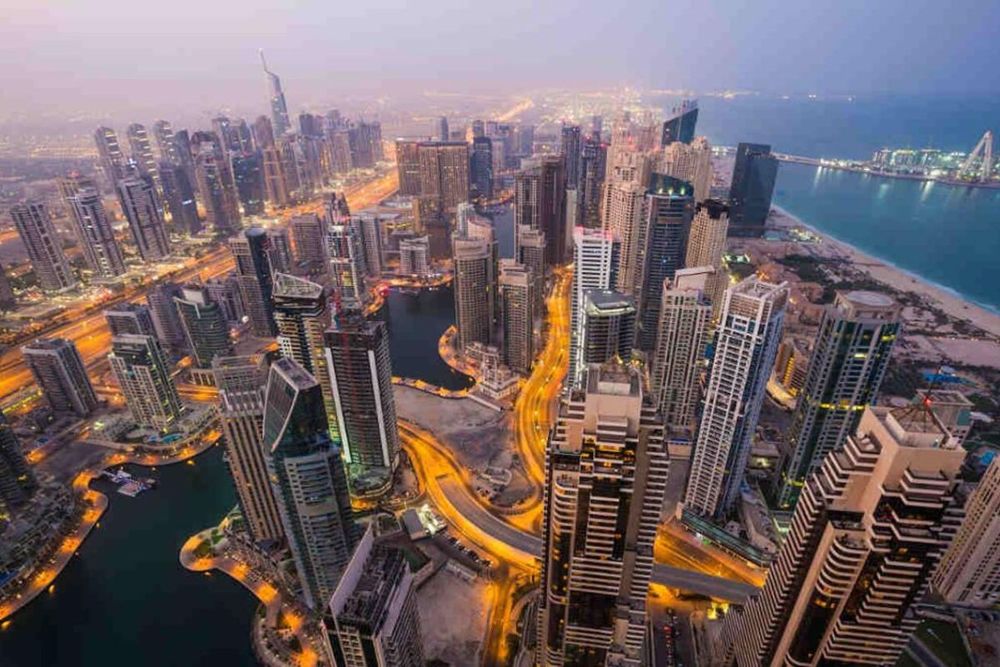Dubai's prime residential market set for world's strongest growth in 2023.
With prime homes transacting for around $800 per square foot, Dubai is one of the most ‘affordable’ luxury residential markets in the world.
The prime residential market in Dubai will post strong double-digit price growth and lead global markets in 2023, says the latest report.
The price in prime residential areas, which encompasses the neighbourhoods of Palm Jumeirah, Emirates Hills and Jumeirah Bay Island, are set to experience a 13.5 per cent increase next year -- the strongest price growth globally as cities like Paris, New York and Singapore will only be able to achieve single-digit growth, according to Knight Frank's 2023 Prime Predictions.
The global property consultancy, in its Dubai edition, said luxury properties in the emirate will remain in demand and prices are likely to end the year around 50 per cent higher than in 2021.
Faisal Durrani, partner and head of Middle East Research said Dubai’s prime residential market has and continues to be a global outlier, with record price growth in 2022, albeit this has been from a low base.
"Prime values are being fuelled by Dubai’s safe-haven status, an exceptionally diverse range of international ultra-high-net-worth individuals in search of luxury second homes, combined of course with the government’s world-leading response to the pandemic, which has spurred business confidence,"
Durrani said.
“Adding to the city’s appeal is its relative ‘affordability’, with prime homes transacting for around $800 per square foot, making Dubai one of the most ‘affordable’ luxury residential markets in the world. Overall residential prices trail 2014 peak levels by 21.4 per cent,”
he said.
Dubai's supply challenge
Dubai’s perennial challenge has been its ‘build-it-and-they-will-come’ mantra, which has resulted in more homes being built than the market is capable of absorbing. In this cycle, however, Knight Frank says the number of new high-end homes planned is failing to keep pace with demand.
Bulgari Lighthouse on Jumeirah Bay Island (31 apartments) and Alpago’s Palm Flower on Palm Jumeirah (11 apartments) account for the bulk of new high-end homes coming to the city’s prime neighbourhoods.
Outlook for 2023
Knight Frank says Dubai’s mainstream residential market is expected to register price increases of 5-7 per cent by the end of 2022 and a similar rate of growth is expected in 2023.
“For prime Dubai, prices are likely to end the year around 50 per cent higher than 2021,"
Durrani said.
He said supply is the other critical factor in our 2023 outlook, with just eight villas in Dubai’s prime precincts expected to be delivered by 2025.
"Developers have not responded to the buoyancy in demand as we have seen in past cycles and with supply remaining limited and demand for luxury waterfront continuing to strengthen, our 2023 prime residential forecast of 13.5 per cent is supported by a clear demand-supply imbalance as well as a positive economic backdrop,"
he said.
Indeed, Durrani said the UAE is expected to have one of the world’s fastest-growing economies in the world in 2022. A return to steady and sustainable growth will instill confidence in homeowners and investors alike.
“Our outlook is not without its risks. Dubai is a world city and as such is to an extent vulnerable to global macroeconomic conditions. With increasing global economic uncertainty, Dubai is once again emerging as a safe haven destination, just as it did during the height of the Covid-19 pandemic,”
he said.
Prime global residential markets
Across the 25 cities tracked, Knight Frank’s global research network now expects prime residential prices to rise by two per cent on average in 2023, down from 2.7 per cent predicted six months ago. Despite this slowdown, aggregate growth in 2023 would still be higher than that recorded in six of the last 10 years.
Knight Frank says after two years in which the pandemic fuelled a surge in house prices in most global cities, the landscape is now shifting. Money is becoming more expensive, geopolitics more complex and China is no longer powering the world’s economy. Homeowners are having to grapple with the
unpredictability of soaring inflation, the rising cost of debt, and higher taxes. Although prime markets are more insulated from the fallout from higher mortgage costs, they’re not immune.
The transition from a seller to a buyer’s market is already underway across many prime residential markets. But prime residential prices would need to dip by 30-40 per cent in some cities for prices to return to their pre-pandemic levels of 2019, according to Knight Frank’s analysis.
News Source: Khaleej Times









